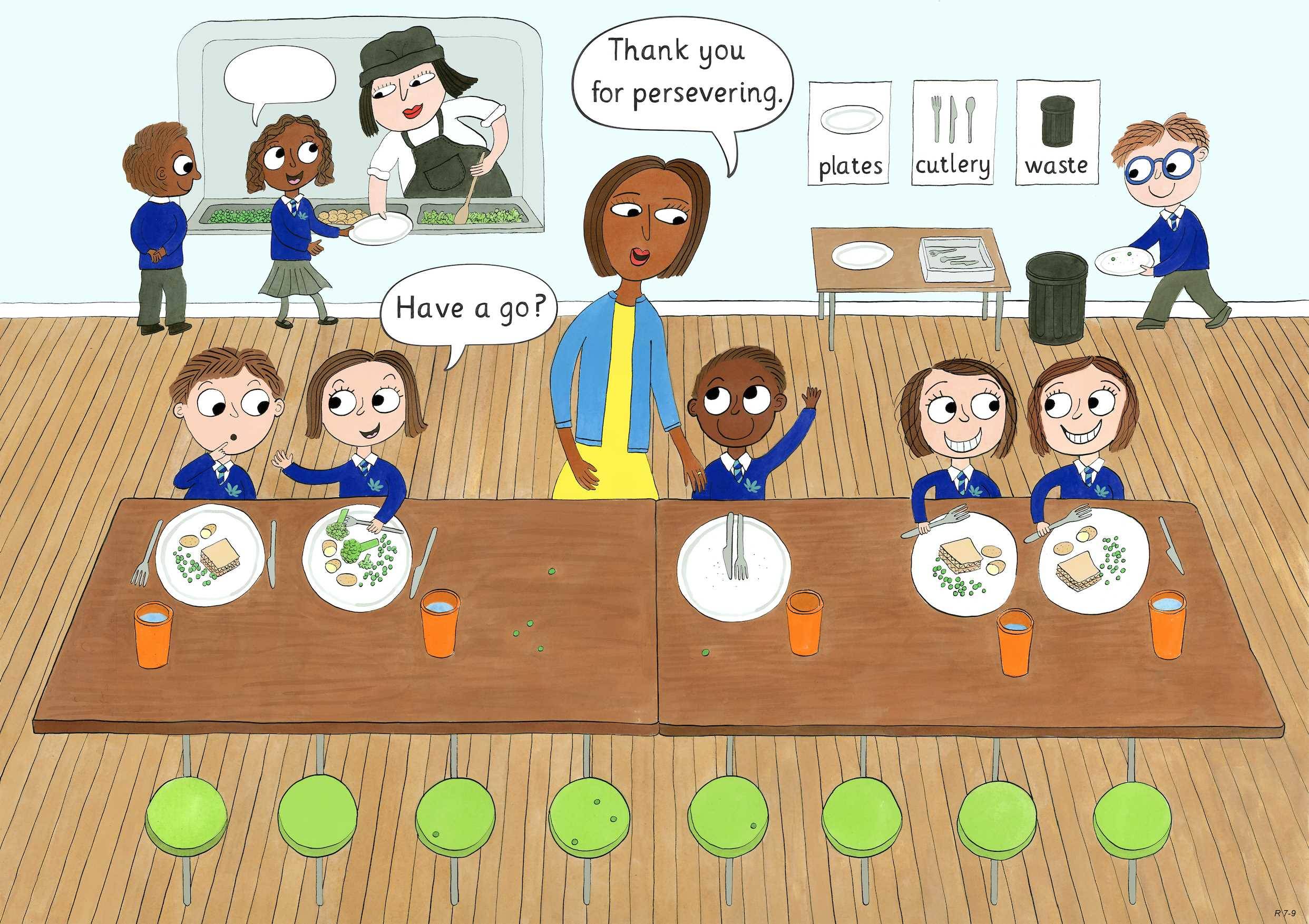Curiosity
Reception: We can be curious about everyday objects
Core Story
Ordinary Objects, written for Floreat (see R Curiosity) shows the process involved in making a pencil from a seedling, and a jumper from the wool of a sheep. In this unit the first part of Activity 1 contains an introduction to the virtue, before the story is read. This story has been written specifically for the Floreat Programme.

Drawing out the virtues
Who has learnt something new today? Talk about the fact that there is so much to learn about everyday objects. Begin the lesson by asking your class where they think pencils come from. Take a few answers, then tell them that as a reward for their curiosity about the pencil, you’re going to tell them all about where they come from and share the core story together ( R Curiosity).
Being curious means asking lots of questions and wanting to know more about things. You could ask pupils ‘where does the wool in your jumper come from?’ and encourage pupils to ask questions about where things come from and how they are made. This links to gratitude because it helps pupils to really appreciate the effort that has gone into producing something they might have previously take for granted. The purpose of this is to show pupils how everyday objects can be fascinating.
Activity 1: What do you want to know?
Give pupils time to think of a question they would like to know the answer to eg. why do zebras have stripes? Pupils share their question with the group and the teacher can type these up and show them on the interactive white board. Pupils can suggest answers for each other’s questions and the teacher can select one of the questions and set it as a challenge for pupils to find the answer for home learning.
Activity 1: What do you want to know?
Give pupils time to think of a question they would like to know the answer to eg. why do zebras have stripes? Pupils share their question with the group and the teacher can type these up and show them on the interactive white board. Pupils can suggest answers for each other’s questions and the teacher can select one of the questions and set it as a challenge for pupils to find the answer for home learning.
Activity 2: Ask your friend a question
Remind pupils that being curious is all about asking questions and we can find out lots about our friends by asking them questions. Ask pupils to think of a question they are going to ask a peer and share some examples eg. They could ask them what they like to do at the weekend, where is their favourite place, what is their favourite book or toy, who is special to them etc. The purpose of this is to encourage children to ask each other questions about themselves.
Pupils find a partner they do not normally work with and take turns asking their questions. Choose some pupils to feedback to the class and then ask pupils to repeat with a new partner.
|
Sayings
|
|
To pique someone’s curiosity.
Only boring people get bored.
|
Library books
Encyclopedias
Non-fiction books about birds, trees, plants, animals, different countries, transport.
We’re Going to Build a Dam by Gillian McClure
How Do the Flowers Grow? Usborne Flip Book
The Curious George series by Margaret Rey
The Snail and the Whale by Julia Donaldson